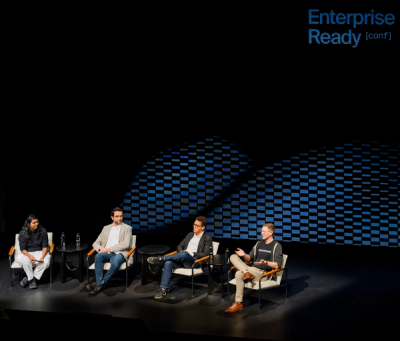
Security News
OWASP 2025 Top 10 Adds Software Supply Chain Failures, Ranked Top Community Concern
OWASP’s 2025 Top 10 introduces Software Supply Chain Failures as a new category, reflecting rising concern over dependency and build system risks.
io.github.luiinge:docsite-maven-plugin
Advanced tools
A Maven plugin that generates static documentation sites


Docsite is a Maven plugin that generates static documentation sites with minimal effort. It is an alternative to the standard Maven site generation, providing the following benefits:
This very site has been generated using Docsite (check the site in case you are reading this document from Github).
build configuration in the pom.xml file: <build>
<plugins>
<plugin>
<groupId>io.github.luiinge</groupId>
<artifactId>docsite-maven-plugin</artifactId>
<version>1.5.2</version>
</plugin>
</plugins>
</build>
docsite:generate goalmvn docsite:generate
If you want a custom site structure, you can pass an external JSON file with the docsite definition:
mvn docsite:generate -Ddocsite.docsiteFile=mydocsite.json
You can also provide custom configuration just after the declaration of
the plugin within the pom.
<build>
<plugins>
<plugin>
<groupId>io.github.luiinge</groupId>
<artifactId>docsite-maven-plugin</artifactId>
<version>1.5.2</version>
<configuration>
<docsite>
...
<sections>
<section>
...
</section>
</sections>
</docsite>
</configuration>
</plugin>
</plugins>
</build>
Check the goal documentation for an exhaustive list of every configuration parameter.
Apart from the landing page, you can define different sections for the documentation site. Each section would generate its own page and also an entry in the navigation menu at the header. Each section must define the type of strategy that would be used in order to generate the proper output. The available section types are:
A single HTML page would be generated from a source file. Markdown, HTML and raw text sources are processed directly, whereas XML, JSON and YAML sources requires a Freemarker transformation template.
<section>
<type>generated</type>
<name>Changelog</name>
<source>CHANGELOG.md</source>
</section>
<section>
<type>generated</type>
<name>Dependencies</name>
<source>target/dependencies.xml</source>
<template>templates/dependencies.ftl</template>
</section>
A complete site (from a local folder) would be copied into the
documentation site, and shown inside an embedded iframe component.
<section>
<type>embedded</type>
<name>Javadoc</name>
<source>target/site/apidocs</source>
<siteIndex>index.html</siteIndex>
</section>
A complete site (from a local folder) would be copied into the documentation site, but linked and loaded in a new tab as an independent page.
<section>
<type>copy</type>
<name>Javadoc</name>
<source>target/site/apidocs</source>
<siteIndex>index.html</siteIndex>
</section>
A simple HTML page would be generated including links to other sections
of the documentation site. These linked sections are defined hierarchically in
the subsections property of the section. Also, a dropdown menu would be used
in the navigation header.
<section>
<type>group</type>
<name>Reports</name>
<subsections>
<section>
...
</section>
<section>
...
</section>
</subsections>
</section>
No specific page is generated, but rather a simple link in the navigation header.
<section>
<type>link</type>
<name>Company Site</name>
<source>http://my.company.com</source>
</section>
In absence of a site configuration, the plugin would generate one for you. Although not fully compliant with every posible scenario, it would make an attempt to generate a good-enough site according the resources found in the project:
pom.xml file would be used as the title in
the site headerREADME.* file, it would be used as the landing
page of the site.CHANGELOG.* file, a Changelog section would be createdLICENSE file, a License section would be createdtarget/site/apidocs directory, a subsection Javadoc would be
created within the main report sectiontarget/site/dependencies.html file, a subsection Dependencies would be
created within the main report sectiontarget/site/surefire-report.html file, a subsection Test Results would be
created within the main report sectiontarget/site/jacoco directory, a subsection Coverage would be
created within the main report sectiontarget/classes/META-INF/maven/plugin.xml (specific for Maven plugin
projects), a subsection Plugin Goals would be created within the main report section.scm section of the pom.xml file is filled, a link to the corresponding version control
site would be added (with custom icons for Github, Gitlab and Bitbucket)The following configuration would be equivalent to the autogenerated configuration:
<docsite>
<title>${project.name}</title>
<description>${project.description}</description>
<index>README.md</index>
<sections>
<section>
<type>generated</type>
<name>Changelog</name>
<description>Log of modifications on new versions</description>
<source>CHANGELOG.md</source>
<icon>fas:clipboard-list</icon>
</section>
<section>
<type>group</type>
<name>Reports</name>
<description>Collection of technical reports about this project</description>
<icon>fas:file-medical-alt</icon>
<subsections>
<section>
<type>embedded</type>
<name>Javadoc</name>
<source>${project.reporting.outputDirectory}/apidocs</source>
<icon>fab:java</icon>
</section>
<section>
<type>generated</type>
<name>Plugin Goals</name>
<source>${project.build.outputDirectory}/classes/META-INF/maven/plugin.xml</source>
<template>maven-plugin-descriptor</template>
</section>
<section>
<type>generated</type>
<name>Test Results</name>
<source>${project.reporting.outputDirectory}/surefire-report.html</source>
</section>
<section>
<type>embedded</type>
<name>Test Coverage</name>
<source>${project.reporting.outputDirectory}/jacoco</source>
</section>
<section>
<type>generated</type>
<name>Dependencies</name>
<source>${project.reporting.outputDirectory}/dependencies.html</source>
<replaceEmojis>false</replaceEmojis>
</section>
</subsections>
</section>
<section>
<type>link</type>
<name>Source</name>
<source>https://github.com/luiinge/docsite-maven-plugin</source>
<icon>fab:github</icon>
</section>
<section>
<type>generated</type>
<name>License</name>
<source>LICENSE</source>
<icon>fas:balance-scale</icon>
</section>
</sections>
</docsite>
In case you are working with a multi-module Maven project, you would require to execute two different goals.
generate goal that would generate a site per sub-projectaggregate goal that would generate a different site only for the root
project.
You can pass a different docsite configuration to the aggregate goal with embedded or
copy sections referring to the subproject sites.For example, your root pom.xml might contain something like the following:
<build>
<plugins>
<plugin>
<groupId>io.github.luiinge</groupId>
<artifactId>docsite-maven-plugin</artifactId>
<version>1.2.1</version>
<executions>
<execution>
<goals>
<goal>generate</goal>
</goals>
<configuration>
<docsite>
<!-- common configuration applied to each subproject -->
</docsite>
</configuration>
</execution>
<execution>
<goals>
<goal>aggregate</goal>
</goals>
<configuration>
<docsite>
<!-- configuration applied to root subproject -->
</docsite>
</configuration>
</execution>
</executions>
</plugin>
</plugins>
</build>
For the main property logo, as well as the section property icon, you can choose among
different sources according the property value:
http: or https:, the image source would be an external link to the given URLfa:, fas:, far: or fab:, the image would be a
Font Awesome 5 icondata:image, you can embed an image using the corresponding Base64 code
(as defined in RFC-2397)Github uses a mechanism that replaces specific text markups with icons when
displaying certain documents (for example, the following would be rendered as an emoji: :smile:).
The pages generated with Docsite would apply the same transformations by
default in order to emulate such representation. However, it is possible that some documents
use those markups without any emoji intention and hence the generated page would contain
unexpected images. If you experience this problem, simply disable the emoji replacement by setting
to false the property replaceEmojis in the problematic section.
The websites generated with Docsite make use of CDN (Content Distribution Network) for
some required resources (Font Awesome 5
and Prism scripts and stylesheets). This is highly advisable
to improve loading time and reducing traffic. However, there might be specific scenarios
where a local copy would be preferred.
You can instruct Docsite to use a local copy of such resources setting to false the property
useCDN.
In contrast with the default Maven site generation, that is based in the concept of pluggable
reports, Docsite does not require to be executed in the context of a Maven site. The generate
goal is attached to the post-site phase by default, but you are not forced to invoke the site
goal at all. Rather, you can redefine the phase or invoke docsite:generate at will.
The only consideration is that in most cases you may require the result of some other report that
is intended to be used with site. Some report plugins have goals that can be executed
standalone, but most require the site context.
This piece of software is designed as a Maven plugin, but actually that is a loose requirement.
As any regular Jar file, you can include it (along with its dependencies) in your classpath and
make use of the DocsiteEmitter class without a Maven executor. It is, though, still advisable
that you peek the implementation of DocsiteMojo in order to get the idea of the minimum setup
required.
If you want to analyze the traffic of your documentation site, you may need to insert custom
code into the head section, such as specific meta-data or binding scripts. In order to allow
that, any custom code can be added using the metadata and scripts properties.
Here you can add your extra code, like in the following example:
<configuration>
...
<metadata>
<keywords>CSS,Javascript</keywords>
</metadata>
...
<scripts>
<script>
<src>https://www.googletagmanager.com/gtag/js?id=XXXXXXX</src>
<async>true</async>
</script>
<script>
<code>
window.dataLayer = window.dataLayer || [];
function gtag(){ dataLayer.push(arguments); }
gtag('js', new Date());
gtag('config', 'XXXXXXXXX');
</code>
</script>
</scripts>
...
</configuration>
You can enrich your documentation site providing localized versions of some documents. When enabled, a language selection option would be accessible in every page in the top right corner.
In order to enable the localization features, you must provide the list of provided languages within the plugin configuration. For example:
<configuration>
...
<languages>
<language>en:English</language>
<language>es:Español</language>
</languages>
...
</configuration>
Each language is defined by two codes separated by :. The first code is the language code
used by your localized documents. The second code corresponds to the display language and
should be the translated name of the language. Notice that the first language in the list is
considered as the primary language.
During the generation process, for each section marked with the generated type,
a similar source file will be searched at the same location of the original source,
but with a prefix indicating the language code just before the extension (or just at the
end of the name if there is no extension). For example, for a given README.md file and the
additional language code es, a file named README_es.md would be expected.
The primary language, however, would use the file with the regular name,
just like if no localization was defined.
In addition to the document content, you can provide translations for the names and descriptions
used by the site and its sections. In order to do that, use the localizations configuration
property. For example:
<configuration>
...
<docsite>
<title>My Project Title</title>
<description>My Project Description</description>
<index>README.md</index>
<sections>
<section>
<type>generated</type>
<name>Changelog</name>
<description>Log of modifications</description>
<source>CHANGELOG.md</source>
</section>
</sections>
</docsite>
<languages>
<language>en:English</language>
<language>es:Español</language>
</languages>
<localizations>
<localization>
<language>es</language>
<values>
<Changelog>Historial de cambios</Changelog>
</values>
</localization>
</localizations>
</configuration>
Alternatively, you can create a JSON file like the following:
{
"es": {
"My Project Title": "Título del proyecto",
"My Project Description": "Descripción de mi proyecto",
"Changelog": "Historial de cambios"
}
}
and pass it with the property localizationFile.
Notice that the primary language has no translations in the JSON file, since they are directly provided in the configuration and are used as keys for the other languages.
No plugin found for prefix 'docsite' in the current project and in the plugin.You can get this message when running mvn docsite:generate or mvn docsite:aggregate.
That is because Maven only resolve plugin prefixes for plugins belonging to the groups
org.apache.maven.plugins and org.codehaus.mojo. There are several ways to solve this issue:
Option A. Edit your Maven settings file (per-user: ${user.home}/.m2/settings.xml;
global: ${maven.home}/conf/settings.xml), adding the following:
<settings>
...
<pluginGroups>
<pluginGroup>io.github.luiinge</pluginGroup>
</pluginGroups>
</settings>
In case you are using this tool during a CI/CD operation, you will require to edit the
settings.xmlfile during the operation. Check the documentation of your CI/CD platform to find out how to accomplish this.
Option B. Use the full name of the plugin:
mvn io.github.luiinge:docsite-maven-plugin:1.5.2:generate
Be aware that by using this method you cannot define the configuration in the pom,
you must pass any configuration data via parameters
Option C. Bound the execution to one of the build phases and run the predefined goal. For example, using the following:
<plugin>
<groupId>io.github.luiinge</groupId>
<artifactId>docsite-maven-plugin</artifactId>
<version>1.5.2</version>
<configuration> ... </configuration>
<executions>
<execution>
<id>generate-site</id>
<goals>
<goal>generate</goal>
</goals>
<phase>prepare-package</phase>
</execution>
</executions>
</plugin>
and running
mvn package
If you want to contribute to this project, visit the Github project. You can open a new issue / feature request, or make a pull request to consider. If your contribution is worthy, you will be added as a contributor in this very page.
If you have found any defect in this software, please report it in Github project Issues. There is no guarantee that it would be fixed in the following version, but it would be addressed as soon as possible.
FAQs
A Maven plugin that generates static documentation sites
We found that io.github.luiinge:docsite-maven-plugin demonstrated a not healthy version release cadence and project activity because the last version was released a year ago. It has 0 open source maintainers collaborating on the project.
Did you know?

Socket for GitHub automatically highlights issues in each pull request and monitors the health of all your open source dependencies. Discover the contents of your packages and block harmful activity before you install or update your dependencies.

Security News
OWASP’s 2025 Top 10 introduces Software Supply Chain Failures as a new category, reflecting rising concern over dependency and build system risks.

Research
/Security News
Socket researchers discovered nine malicious NuGet packages that use time-delayed payloads to crash applications and corrupt industrial control systems.

Security News
Socket CTO Ahmad Nassri discusses why supply chain attacks now target developer machines and what AI means for the future of enterprise security.